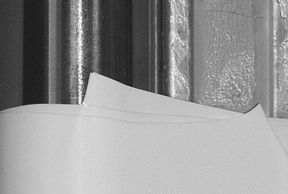
Readers can’t fault PS for not keeping up with developments in the realm of tape. In the past two years, we’ve published feature articles on self-bonding tapes and masking tapes, and updated the former with a new product presentation in Chandlery. In 1999, we conducted the mother of all tests on duct tape (products from Manco, 3M, and National prevailed).
Though duct tape remains the tool of choice for many on-board emergencies, self-bonding or self-amalgamating tapes are beginning to win us over. These products are turning out to be invaluable in so many applications, from sealing pipe leaks to entrapping cotter pins to insulating electrical cords.
PS initially tested these handy products roughly five years ago (our report appeared in the March 2001 issue). We identified Tommy Tape as the best performer. It lasted longer than all but of the one other six tape products, and was less expensive.
Later, in our June 2004 issue, we put Tommy Tape head-to-head against a then-new product called X-treme Tape. After six months of outdoor exposure, the challenger began to tear, and five months later, we again crowned Tommy Tape the champ.
Now comes a relatively new self-bonding tape—Atomic Tape. We first spied this item at the U.S. Sailboat Show in Annapolis this fall. It was being hawked in a corner booth by the toothsome president of the company that markets it—Brooke Latronica of Atomic Concept Group based in Rockville Centre, NY.
Like Tommy Tape, Atomic Tape is made from silicone. Its claim is that “when wrapped with at least a 50% overlap…it provides a self-fusing, inseparable, cohesive insulating barrier that is resistant to moisture, oxygen, ozone and corona…”
To cut to the chase, we asked Latronica how Atomic Tape differed from Tommy Tape. She told us that it fuses faster (in less than 1 minute) and said that unused portions won’t dry out if left exposed, even for years.
Atomic Tape and Tommy Tape share many properties. Both have a dielectric strength of 400 volts per mil (of thickness). Both resist heat up to 500° F and cold down to -65° F, and both claim a tensile strength of 700 psi.
Atomic Tape comes in rolls 1″ wide, and are 15′ long as opposed to Tommy Tape’s 10′. Tommy Tape comes in widths from 1/4″ to 4″. When used, both products are meant to be stretched roughly three times their initial length. Tommy Tape is made in nine colors, including a glow-in-the dark shade and a clear option. Atomic Tape comes stock in black or white, but seven other colors (and clear) are available periodically. Atomic Tape can be purchased online; a three-roll pack sells for $31.98, plus shipping and handling (making it twice the price per foot of Tommy Tape— $.71 vs. $.33).
So, what else is there to do but re-enact our head-to-head test. We’ll expose both Tommy Tape and Atomic Tape to the elements this winter and let you know how they fare.
Contact – Atomic Concept Group, 516/435-5539, www.atomictape.com.



































